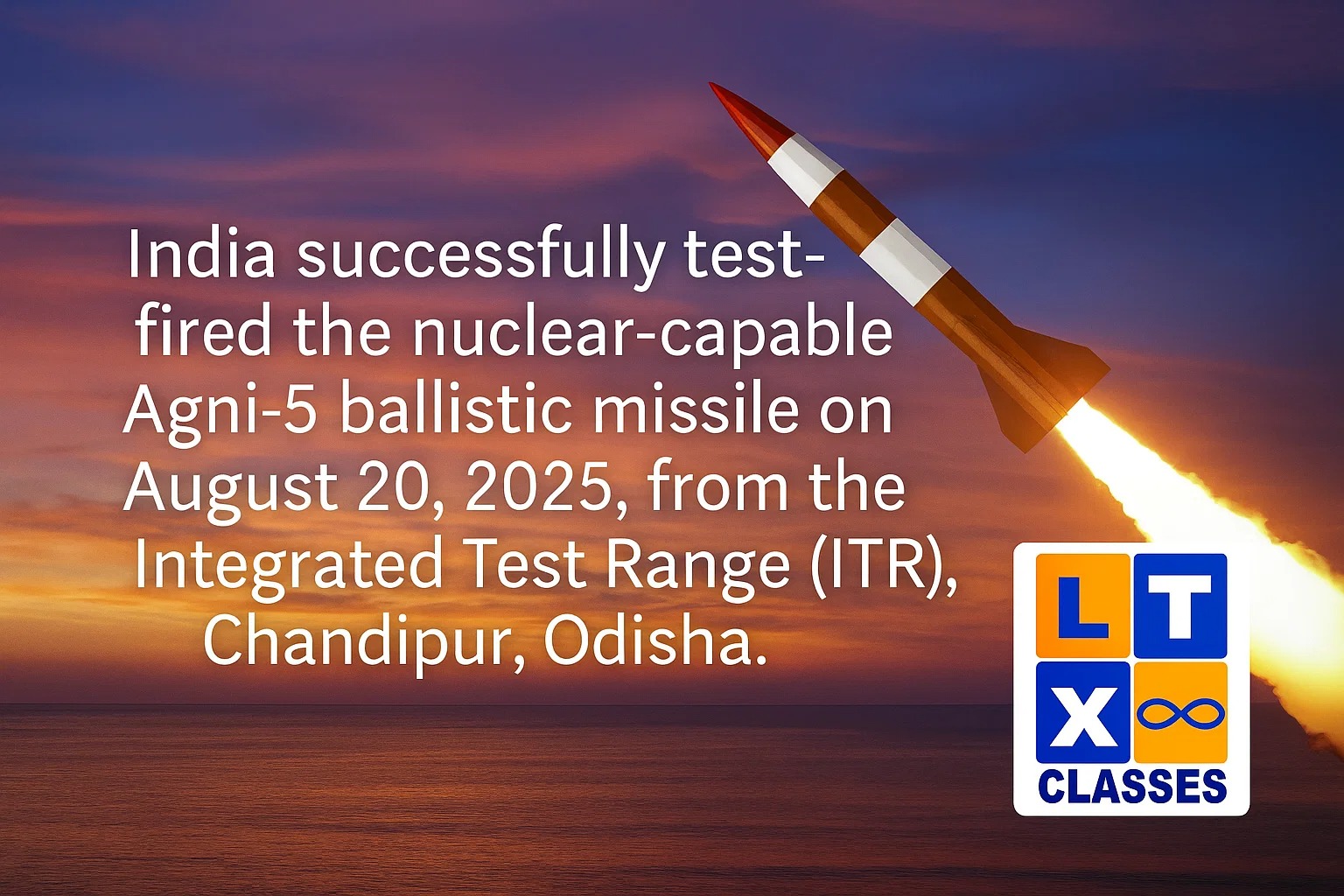There are no items in your cart
Add More
Add More
| Item Details | Price | ||
|---|---|---|---|
India successfully test-fired the nuclear-capable Agni-5 ballistic missile on August 20, 2025, from the Integrated Test Range (ITR), Chandipur, Odisha. The test was conducted by the Strategic Forces Command (SFC) under operational conditions to validate India's long-range deterrent capability. The missile has a strike range of up to 5,000 km, and this test strengthens India’s position as a credible nuclear power. 🛰️
Integrated Guided Missile Development Programme (IGMDP): Launched in 1983 under the leadership of Dr. A.P.J. Abdul Kalam. Objective: To develop a comprehensive range of indigenous missile systems. Executed by the Defence Research and Development Organisation (DRDO). Key Missiles under IGMDP: Missile Type Role Prithvi SRBM Surface-to-surface, battlefield missile Agni IRBM/ICBM Strategic deterrence Akash SAM Surface-to-air defence Trishul SAM Short-range naval defence Nag ATGM Anti-tank guided missile IGMDP was formally closed in 2008, after successful completion of objectives. 🚀 
Missile Range Type Agni-I ~700-1,200 km SRBM Agni-II ~2,000-3,500 km MRBM Agni-III ~3,000-5,000 km IRBM Agni-IV ~4,000 km IRBM Agni-V ~5,000-5,500 km ICBM class Agni-VI (under development) ~8,000-10,000 km ICBM, MIRV-capable Developed under DRDO to strengthen India’s credible minimum deterrence posture. All Agni missiles are nuclear-capable. ⚙️
MIRV = Multiple Independently targetable Reentry Vehicle Definition: A ballistic missile payload that can carry multiple nuclear warheads, each capable of hitting a different target. Key Features: Increases strike efficiency and survivability against enemy missile defenses. Makes it difficult to intercept due to simultaneous attack on multiple targets. Enhances second-strike capability — vital for nuclear deterrence. Status in India: India is developing MIRV capability, expected to be integrated with Agni-VI and potentially future Agni-V upgrades. 🛡️
Strategic Autonomy & Agni-5: Deterrence: Extends reach to China, Central Asia, Europe, enhancing deterrence in strategic theaters. No First Use (NFU): Strengthens India’s NFU policy by assuring robust second-strike capability. Strategic Signaling: Acts as a geopolitical signal of India's technological self-reliance and military maturity. Security Doctrine: Integral to India’s triad-based nuclear doctrine — air, land, and sea-based nuclear capabilities. Global Context: Places India in an elite group of countries with ICBM-level missile systems. Boosts negotiating power in international disarmament and arms-control platforms.
Q. Which of the following statements regarding Agni-5 missile is/are correct?
1)It is a short-range ballistic missile developed under the IGMDP.
2)It is capable of carrying multiple nuclear warheads (MIRV).
3)It has a strike range of over 5,000 km and can be launched from a mobile platform. Select the correct answer using the code below:
A. 1 and 2 only
B. 2 and 3 only
C. 3 only
D. 1, 2 and 3
Answer: C. 3 only Explanation:
Statement 1 is incorrect: Agni-5 is an ICBM-class missile, not short-range.
Statement 2 is incorrect: While MIRV tech is being developed, it is not yet operationally deployed on Agni-5. Statement 3 is correct.